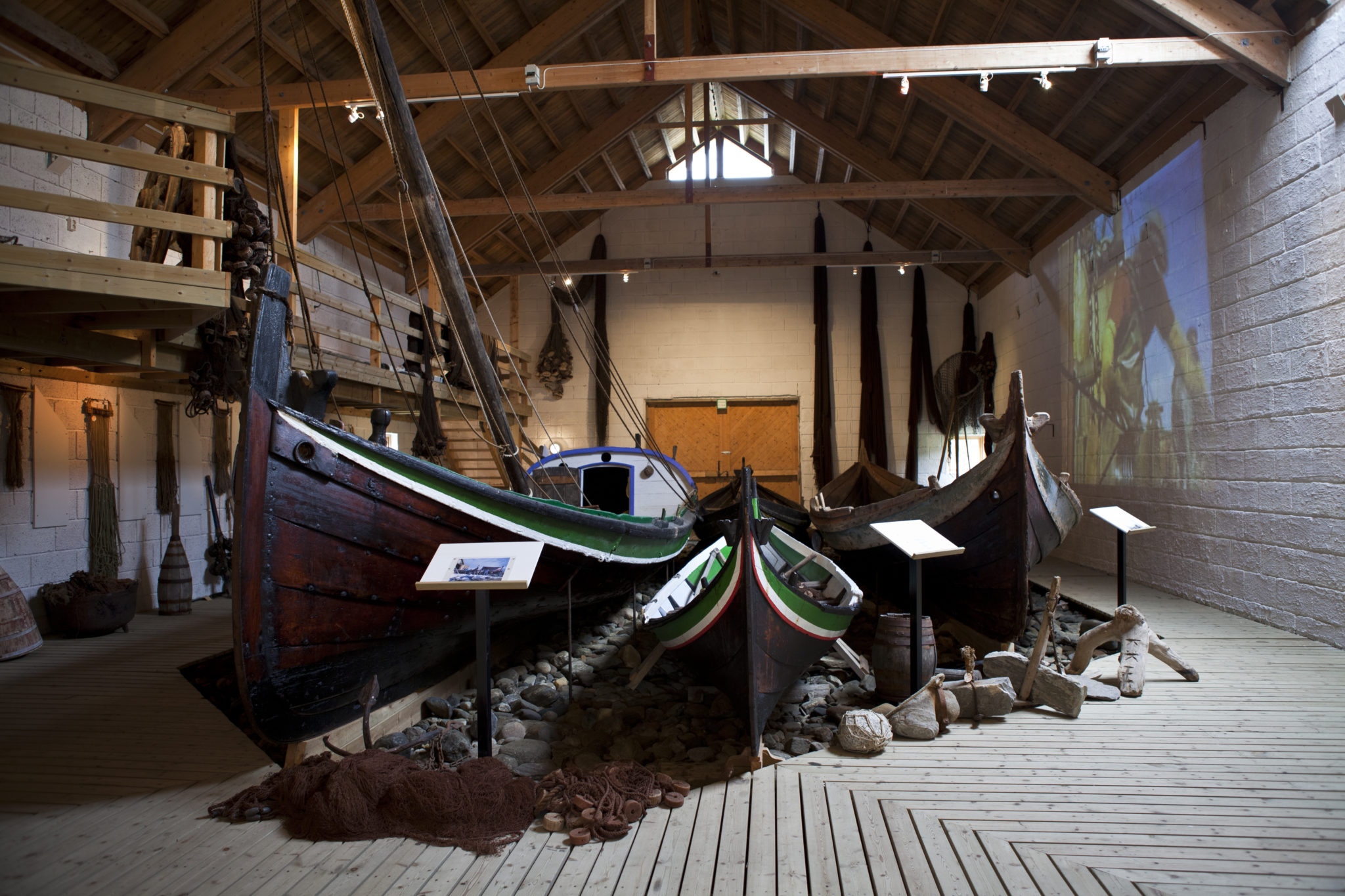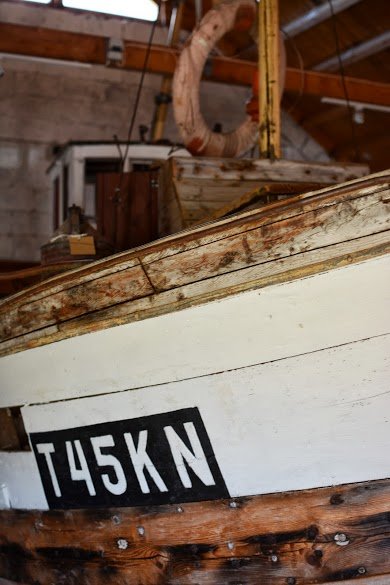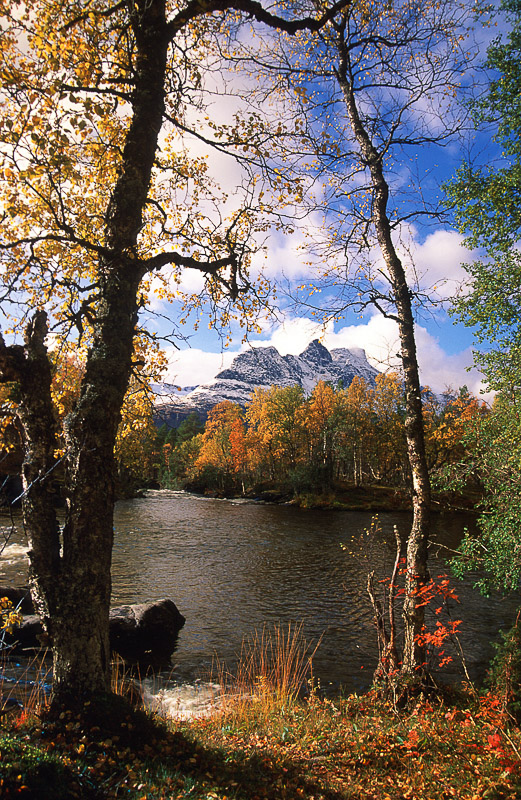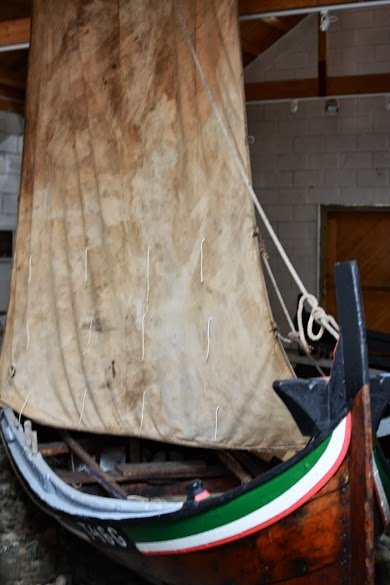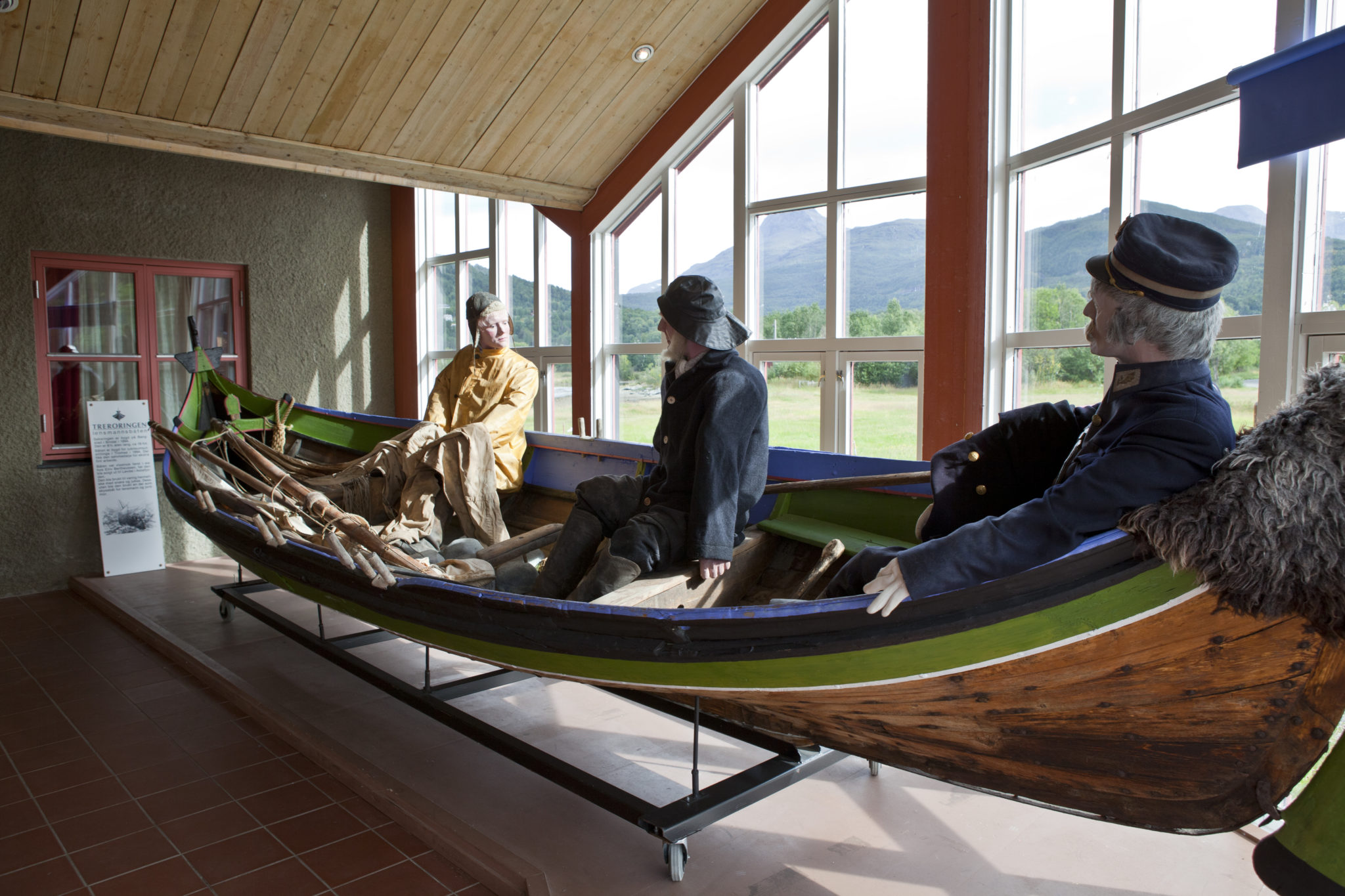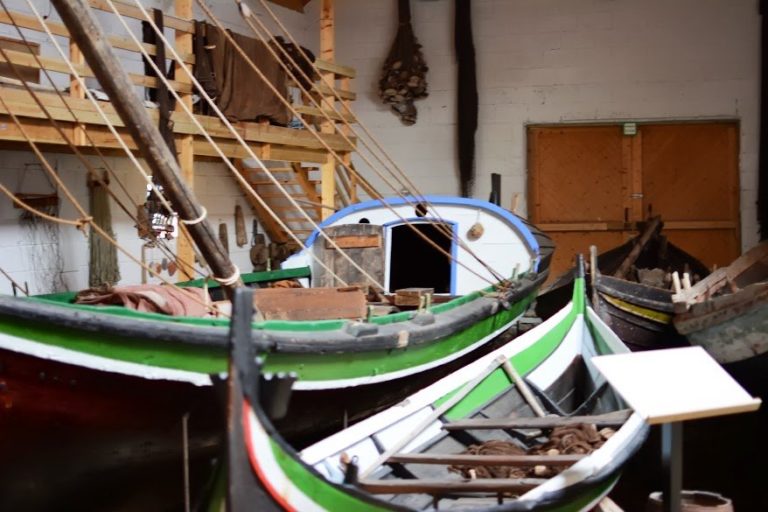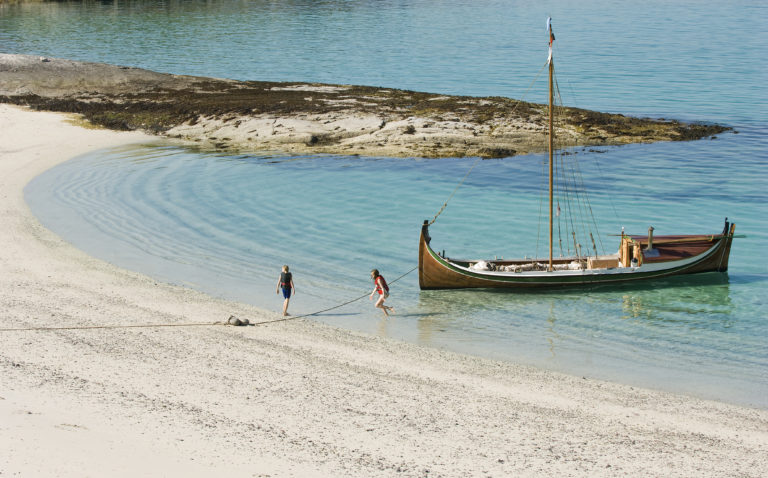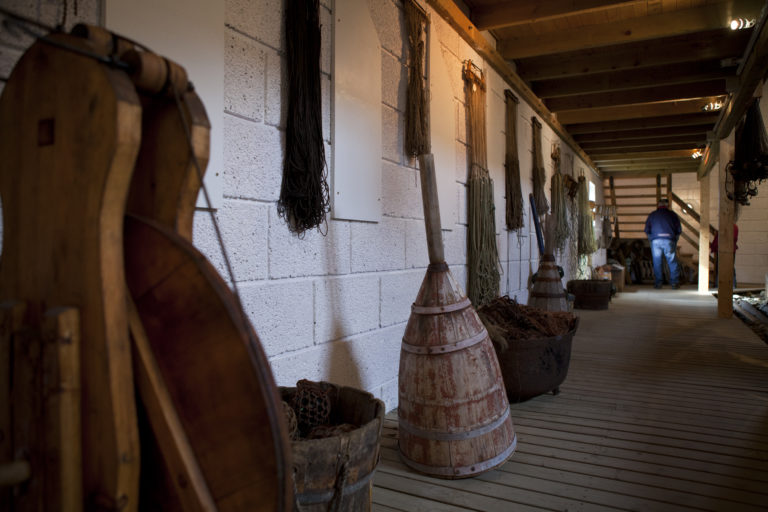You can admire the high-stemmed, elegant Nordland boat at the Northern Norwegian Boat Museum. Nearby you can also see how old boats are restored and given a new lease of life. Gratangen is an excellent place to learn about the coastal culture of this region.
Gratangen is a municipality that has traditionally been involved in fishing and hunting. Its fishermen have taken part in the Lofoten fishery, and fished off the Senja and Finnmarka coasts, as well as on the banks in the Atlantic. Many boats from Gratangen also used to hunt seals. So it’s not that strange to find that old boats and fishing artefacts have been preserved here.
The Nordland boat was the fastest boat around
The traditional boat in Northern Norway is the Nordland boat. It is easy to recognise because of its high, upright stem, and the fact that it lies very low in the water. Traditionally, it was fitted with a square sail. Nordland boats vary in size, from a four-oared boat rowed by two people, via the six-oared boat rowed by three people and the four-oared boat for eight oarsmen, to the ‘fembøring’ boat designed for five oarsmen. Since the vessel and the oars are made of light but strong timber, a team of oarsmen can maintain a speed of 5–6 knots. Under sail, the boat moves almost like a surfboard, and it can achieve speeds of just under 20 knots in good conditions.
Engine invention saw off the Nordland boat
At the start of the 20th century, fishing boats started to use engines. Suddenly, the Nordland boat’s superior sailing properties meant nothing. The boats became rounder in shape, which meant that they could carry more cargo, and they were given a deck and wheelhouse. The dunk-dunk of small fishing boat engines gradually became the background noise to the busy coastal communities in the north.
The museum has a valuable boat collection
The Northern Norwegian Boat Museum in Gratangen has a uniquely valuable collection of boats, displayed indoors in sheds. These sheds have earth floors that are flooded by the tide twice a day, which means that the boats are well bedded-in. The oldest boat dates back to the 18th century, and has the bent bow that was common then. The biggest boat is a complete ‘fembøring’ from 1825, impressive with its high, upright stems, tall mast and ‘løfting’ or removable cabin. A round, deep Lister boat, imported from Southern Norway, and a fishing smack form the 20th century elements of the collection.
A rich culture is represented throughout the museum
It used to take two or three women to get a man dressed to go out on a boat. The outermost layer was a waterproof leather suit, underneath which came layer upon layer of wool, which was essential for staying warm in January. People still tell stories of capsized fishermen who managed to stay warm in the water throughout an entire night. The museum also has numerous other useful artefacts on display. There is a Lofoten chest, which fishermen would pack with warm clothes, dried food and a hymn book, and was designed to be so strong that you could walk on it. There are tubs full of nets to be tanned so that they don’t rot in the water, bottle chests, block and tackle sets for hoisting sails, glass floats used for keeping nets afloat; you can see an astonishing wealth of detail about coastal culture at the Northern Norwegian Boat Museum.
Want to visit the Northern Norwegian Boat Museum?
The museum is located in the municipality of Gratangen 60km north of Narvik. The E6 route from Narvik northward towards Gratangen is full of amazing views of surrounding lakes and mountains. Just take the turning for Gratangsbotn and you’ll see signs for the museum.
The European Route of Industrial Heritage has a page dedicated to the museum and Northern Norway Boat Preservation Centre with contact information.
A miniature reconstruction of the boat was bought back from the British museum
‘Jekt’ boats were quite large sloops that transported dried fish from Northern Norway to Bergen in a tradition unbroken from medieval times to the end of the 19th century. One of the gems in the museum is an exact miniature reconstruction of a ‘jekt’, made in Norway for an international exhibition. The model then went to the British Museum. Due to budgetary constraints during the Thatcher era, it was forced to sell much of what it could not display, and the Northern Norwegian Boat Museum was able to buy the vessel for a low price. It is now on display here for everyone to admire.
The Northern Norwegian Ship Preservation Centre traditionally restores old boats
A few kilometres from the museum is the Northern Norwegian Ship Preservation Centre. Here, old boats are restored using traditional craftsmen’s techniques. Even if a modern approach might be a better way to waterproof a boat, the Northern Norwegian Ship Preservation Centre would not be interested – the preservation of old techniques is its reason for being. During working hours, visitors are welcome to look around the premises, and the centre often puts on informal tours. A great many boats have been given a new lease of life after extensive repairs at the Northern Norwegian Ship Preservation Centre, and typically it is the Coast Association that part-funds the centre’s maintenance work and operation.
